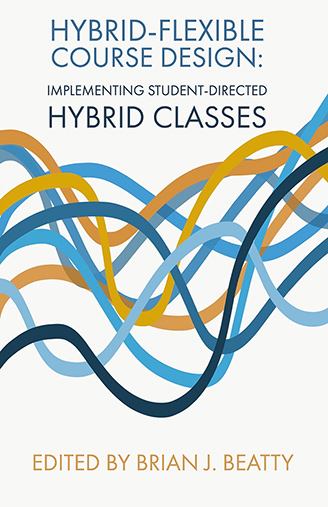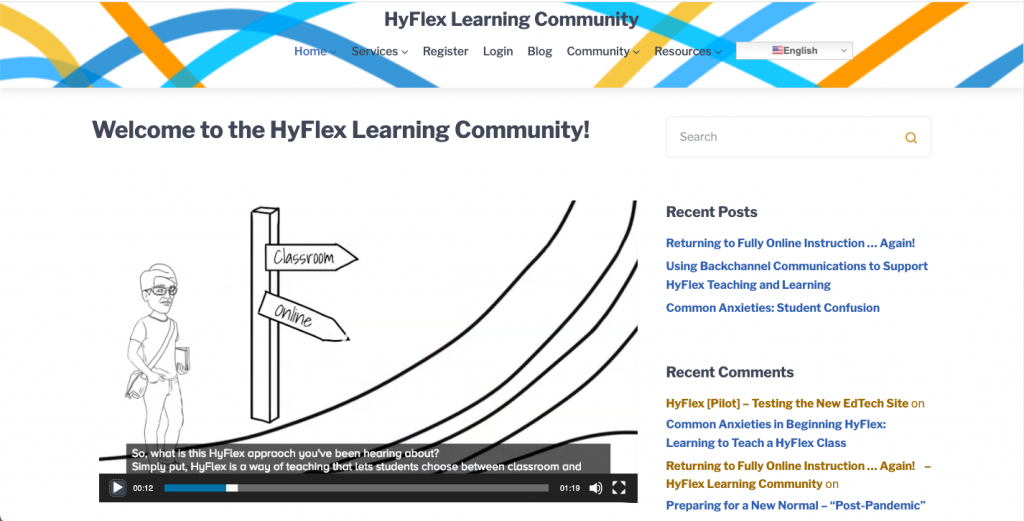by Brian Beatty, San Francisco State University, USA.
Education systems in general, and higher education systems in particular, have struggled continuously to meet the legitimate learning needs of those they are expected and want to serve – around the world. There seem to never be enough seats available, at times and locations convenient and accessible for students, to meet the need for education to prepare students for the modern workplace, advanced studies, and other areas of life they want to pursue.
Single mode instructional programs always have strengths and challenges associated with the characteristics of the instructional and learning experience. In-person classes are often very engaging and socially interactive, but are naturally limited by both location and timing. Synchronous online classes can be very interactive and solve the location limitation but are limited by timing, high-speed network access and computer requirements, and access to a supportive (quiet, safe) learning environment. Asynchronous online classes solve both the location and timing challenges, but are limited by their relatively weak support for meaningful social engagement, reliance on strong instructional design structure, and requirements for student self-management of learning.
We need systems of education and schools that can offer a variety of instructional modes and allow students to make choices among those modes that fit their individual needs and situations. The recent global pandemic has made this even more important than ever, and has been a catalyst for rethinking education and the implementation of flexible learning and teaching approaches in thousands of schools worldwide in the past two years.

Hybrid-flexible course designs – multi-modal courses which combine online and classroom-based students – have been used successfully for more than a decade at many higher education institutions around the world with a wide variety of courses. Some institutions have adopted these designs in complete degree programs, with a few offering their entire curriculum this way. The Hybrid-Flexible (aka HyFlex) approach is described in this free and online book, published in late 2019 and available at https://edtechbooks.org/hyflex.
At San Francisco State, I started calling this design “HyFlex” in 2006; many campuses use this term and many others use their own term for flexible multi-mode learning, such as, co-modal, multiaccess, Peirce Fit, Blendflex, Flex learning, and many others. The term HyFlex may be the most common term used since 2020, and appears at the top of the Gartner Hype Cycle for Higher Education (July 2021).
The impetus for developing a HyFlex approach is a very real need to serve both online and in-person students with a limited set of resources (time, faculty, space) which leads to a multi-modal delivery solution. When students are given the freedom and ability to choose which mode to participate in from session to session, they are able to create their own unique hybrid experience. I sometimes refer to HyFlex as delivering a “student-directed hybrid” learning experience.
The HyFlex book provides readers with strategies, methods, and case stories related to HyFlex course design. The goal of the book is to help educators learn about HyFlex, read stories about how it is being done today, and to help them make informed and thoughtful decisions about beginning their own HyFlex journey.
The book describes the fundamental principles of HyFlex design, explains a process for design and development, and discusses implementation factors that instructors, designers, students and administrators have experienced in a wide variety of education institutions; public and private, large and small, research-intensive, comprehensive universities, and community colleges. I’ve included many case reports from institutions and faculty who have successfully implemented HyFlex-style courses to provide a rich set of real-world stories to draw insights for a reader’s own design setting; new chapters are added every few months.
Four fundamental values and principles guiding HyFlex design:
- Alternatives (Learner Choice): Provide meaningful alternative participation modes and enable students to choose between participation modes weekly (or topically).
- Equivalence: Provide equivalent learning activities in all participation modes, supporting the achievement of equivalent learning outcomes in all modes.
- Reuse:Utilize artifacts from learning activities in each participation mode as “learning objects’ for all students; aim for “build once, use in all modes” when possible.
- Accessibility: Provide accessible materials and active “by design” and equip students with technology skills and access to all participation modes.

In May 2021, I worked with colleagues to launch the HyFlex Learning Community, providing an information-rich website (https://hyflexlearning.org) with resources such as a blog, newsletter, monthly webinars, access to course design workshops, forums for discussion, and a growing bibliography of research on HyFlex (with over 100 entries to date). I invite you to visit the book and community website to explore more about HyFlex and to hear the stories of those who have already adopted HyFlex in ways that fit their context (faculty, context, curriculum, learners, etc.). Learning to teach in different ways is always challenging and equipping an education system to support HyFlex learning is also challenging, but if the need to support student learning in different participation modes is compelling, I and many others have found the improved student access to high-quality and equitable learning opportunities is well worth the cost and effort.

Author
Brian Beatty, Associate Professor, San Francisco State University, USA













